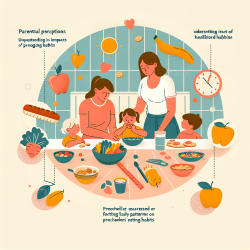Empowering Practitioners to Bridge Health Disparities: Insights from Community-Level Research
The COVID-19 pandemic has highlighted significant health disparities among different racial and ethnic groups in the United States. Among those most affected are American Indian and Alaska Native (AI/AN) communities. A recent study, "The Role of Community-Level Factors on Disparities in COVID-19 Infection Among American Indian/Alaska Native Veterans," sheds light on how neighborhood characteristics contribute to these disparities. This blog aims to equip practitioners with insights from the study to improve outcomes for AI/AN communities.
Understanding the Research
The study examined the impact of community-level factors on COVID-19 infection disparities between AI/AN and White non-Hispanic Veterans. Using data from the Veterans Health Administration (VHA), researchers analyzed neighborhood characteristics such as overcrowded households, lack of plumbing, and socioeconomic status. The findings revealed that these factors partially mediated the disparities in COVID-19 infections, with significant differences observed in areas near tribal lands (CHSDA counties) compared to non-CHSDA counties.
Key Findings
- Neighborhood characteristics like lack of complete plumbing and low socioeconomic status significantly contributed to higher COVID-19 infection rates among AI/ANs.
- The mediating effects of these factors were more pronounced in areas near tribal lands.
- Overcrowded households and lack of kitchen plumbing were also significant mediators, with stronger effects observed in CHSDA counties.
Implications for Practitioners
Practitioners can leverage these insights to tailor interventions that address the unique challenges faced by AI/AN communities. Here are some actionable steps:
- Community Engagement: Collaborate with local leaders and organizations to understand the specific needs and challenges of AI/AN communities.
- Resource Allocation: Prioritize resources and interventions in areas with high levels of overcrowding and inadequate plumbing.
- Education and Awareness: Develop culturally sensitive educational materials to promote COVID-19 prevention measures, such as handwashing and social distancing.
- Advocacy: Advocate for policies that improve infrastructure and access to essential services in underserved communities.
Encouraging Further Research
While this study provides valuable insights, there is a need for further research to explore additional social determinants and their impact on health disparities. Practitioners are encouraged to engage in research initiatives that focus on:
- Identifying other community-level factors that contribute to health disparities.
- Evaluating the effectiveness of targeted interventions in reducing disparities.
- Exploring the role of cultural practices and resilience in mitigating health risks.
By understanding and addressing the root causes of health disparities, practitioners can play a pivotal role in improving health outcomes for AI/AN communities.
To read the original research paper, please follow this link: The Role of Community-Level Factors on Disparities in COVID-19 Infection Among American Indian/Alaska Native Veterans.










